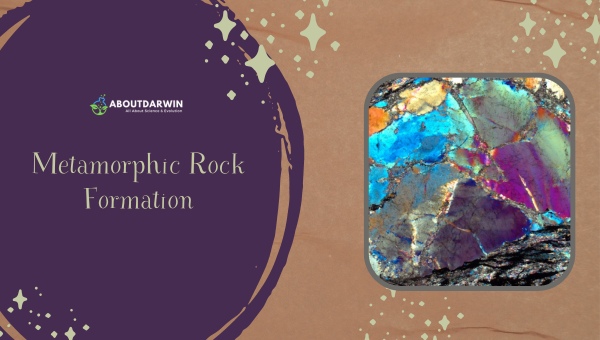Physical Address
304 North Cardinal St.
Dorchester Center, MA 02124
Deep within Earth’s interior, intense heat and pressure transform rocks into fascinating new formations. Metamorphic rocks are born out of this remarkable process called metamorphism. In this article, I’ll discuss the intricacies of metamorphic rocks, explaining how heat, pressure, and metamorphism combine to create some of our planet’s most intriguing geological specimens.
These rocks undergo significant changes in both their mineral composition and physical structure. The result is a stunning array of metamorphic rocks, such as slate, marble, and gneiss, each with unique characteristics and applications in various fields.
It’s crucial to understand the factors responsible for the formation of these rocks, as they not only contribute to the diverse geological landscape but also provide important information about Earth’s history and inner workings.
Here, you’ll learn how different types of metamorphism (Regional, Contact, and Dynamic) shape the metamorphic rocks under varying conditions. We’ll also explore the essential role temperature and pressure play in driving these metamorphic processes. As we delve into the fascinating world of metamorphic rocks, a deeper appreciation for the forces at work beneath Earth’s surface will emerge.
Metamorphic rock formation begins when existing rocks experience significant changes in their physical and chemical properties due to heat, pressure, and metasomatism. Let me guide you through the essential concepts and factors that lead to the formation of metamorphic rocks.

Metamorphic rocks typically form from igneous, sedimentary, or other metamorphic rocks. These parent rocks, known as protoliths, undergo metamorphic changes, which result in the following types of metamorphic rocks:
Several factors contribute to the formation of metamorphic rocks, including:
Read, Top 10 Fascinating Facts About Uranus
The process of metamorphic rock formation is classified into three types based on the dominant factors:
Metamorphic Grade refers to the intensity of metamorphic changes in a rock. It’s important to remember that metamorphic rocks never melt completely; otherwise, they would form igneous rocks.
Metamorphic processes can alter the original rock in various ways, such as:
The metamorphic rock formation is a complex process driven by heat, pressure, and metasomatism. These changes lead to the development of the fascinating rock formations we see today, all while providing invaluable insights into the Earth’s geological history.
In our journey exploring metamorphic rocks, we’ve seen how heat, pressure, and metamorphism play critical roles in their formation. It’s now time to summarize the key points we’ve learned.
Metamorphic rocks are formed due to changes in pre-existing rocks (parent rocks) due to heat, pressure, or chemically reactive fluids. These changes take place within Earth’s crust, where varying temperature and pressure conditions lead to the formation of distinct types of rocks, such as:
The process of metamorphism can either be regional or contact based:
In terms of crystal growth variation, there’s the concept of differential stress, which can lead to the alignment of minerals in metamorphic rocks, creating a foliation texture. We’ve discussed how the degree of metamorphism can affect the properties and appearance of the rock produced:
| Degree of Metamorphism | Appearance | Rock Type |
|---|---|---|
| Low | Smooth surface, fine-grained texture | Slate |
| Medium | Coarser grains, minerals identifiable | Schist |
| High | Coarse, banded appearance | Gneiss |
Lastly, we highlighted the importance of metamorphic rocks in various applications. Examples include their use:
Now that we’ve explored the fascinating world of metamorphic rocks and their role in shaping our environment and human history, it’s clear that these rocks hold more significance than we might have initially realized. Understanding the processes that form these rocks and their applications gives us valuable insight into our planet and its continuous transformation.